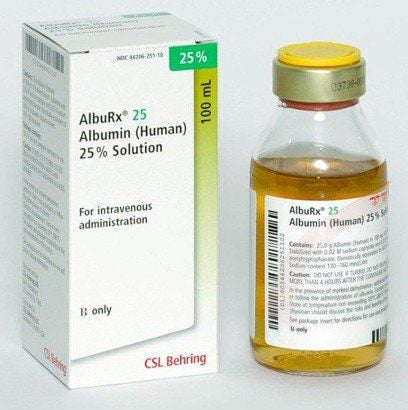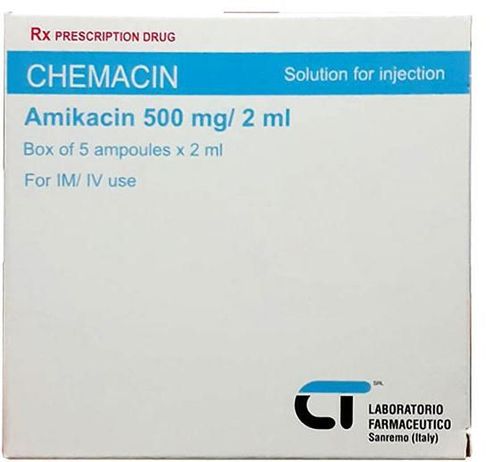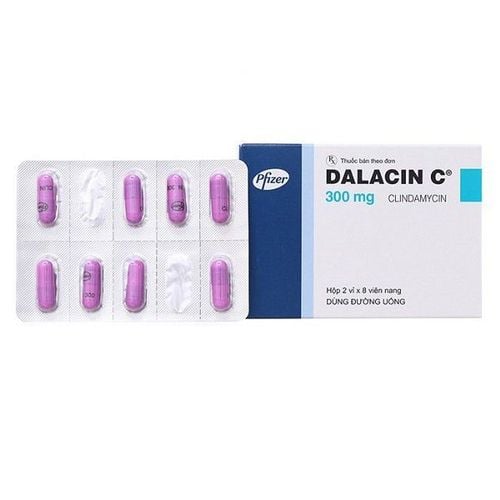This is an automatically translated article.
Teicoplanin is a glycopeptide antibiotic with aerobic and anaerobic Gram-positive bactericidal activity. The drug inhibits the growth of susceptible bacteria by interfering with cell wall biosynthesis at a site different from that of beta-lactam antibiotics. This is the main active ingredient present in the drug Targocid.
1. What is Targocid?
Targocid drug is prepared in the form of lyophilized powder for injection (1 vial of powder + 1 ampoule of distilled water for injection 3ml) with the main active ingredient being Teicoplanin with the following concentrations:
Targocid 200mg/3ml: 1 vial volume 10ml) containing Teicoplanin 200mg lyophilized powder with a tube of 3ml solution. Targocid 400mg/3ml: 1 vial (20ml volume) contains Teicoplanin 400mg lyophilized powder with a 3ml solvent tube. Targocid is a glycopeptide antibiotic, a product of Sanofi-Aventis.
2. What does Targocid do?
Severe infections caused by Gram-positive bacteria, especially Methicillin-resistant and Cephalosporin-resistant Staphylococcus aureus. Targocid is used to prevent Gram-positive infective endocarditis during dental surgery in patients with heart disease at risk, especially in patients allergic to antibiotics of the Beta-lactams family. Targocid is indicated for the treatment of peritonitis by intraperitoneal administration in patients receiving continuous ambulatory peritoneal dialysis. Targocid is contraindicated in patients with hypersensitivity to the active substance or to any of its components.
3. Dosage and how to use Targocid
Targocid is injected with solvent into the Targocid vial containing the active ingredient, gently rub the vial between your hands until the powder is completely dissolved, taking care to avoid foaming, at this point we get an isotonic solution. Teicoplanin has a concentration of about 133.3 mg/ml with a pH of 7.2-7.8.
Targocid can be administered by intravenous infusion (loading dose injection or drip), intramuscular or intraperitoneal injection. Targocid is given once a day, after 1 or more loading doses.
The dose of Targocid for adults with normal renal function is adjusted based on the severity of the infection:
On Day 1, a single intravenous infusion of 6 mg/kg (usually 400 mg) is recommended; The next day, the dose of Targocid may be 6 mg/kg/day (usually 400 mg) intravenously or 3 mg/kg/day (usually 200 mg) intravenously or intramuscularly, once daily. For more severe infections, higher doses of Targocid and intravenous administration are recommended. In potentially fatal infections, treatment with Targocid should be initiated at 6 mg/kg (usually 400 mg) twice daily for 1 to 4 days (loading dose) and continued with Targocid at 6 mg/kg. kg/day, intravenous infusion of Targocid in the following days (maintenance dose). Teicoplanin should be used in combination with another suitable bactericidal antibiotic for maximum bactericidal activity (staphylococcal endocarditis), or in combination in situations where the presence of of Gram-negative bacteria (according to the physician's experience with fever in neutropenic patients).
In most patients, the effects of Targocid can be seen within 48 - 72 hours after starting treatment, however the total duration of treatment is determined based on the type and severity of the infection along with patient response to treatment. In endocarditis and osteomyelitis, the recommended duration of treatment with Targocid is at least 3 weeks.
Adults and the elderly with renal failure, the dose adjustment of Targocid will be made from the 4th day of treatment as follows:
Moderate renal impairment (creatinine clearance 40 - 60 ml/min), drug dose Targocid used daily must be reduced to half or used every other day (2 days); Severe renal impairment (creatinine clearance < 40 ml/min) and for patients on dialysis, the daily dose of Targocid should be reduced to 1/3, or administered every 3 days; Creatinine clearance equal to or less than 20 ml/min, treatment with Targocid only if it is possible to monitor blood levels of the drug. The dose of Targocid for children with normal renal function is based on the type and severity of infection and the child's response to treatment:
Targocid should be started at a dose of 10 mg/kg every 12 hours. , a total of 3 doses of Targocid, then continue treatment with Targocid at a dose of 6 - 10mg/kg/day, the highest dose of Targocid is used for the most severe infections or for children with neutropenia. ; In neonates, treatment with Targocid should be initiated at 16 mg/kg on day 1, followed by maintenance at 8 mg/kg/day by slow intravenous infusion of Targocid (lasting approximately 30 minutes). The dose of Targocid for children with renal impairment should be adjusted as is the case in adults (see above).
It is possible to measure serum concentrations of the antibiotic Teicoplanin to optimize treatment with Targocid. In severe infections, the trough concentration of teicoplanin should not be less than 10 mg/l.
Prevention of endocarditis in dental surgery: Intravenous infusion of Targocid 400mg at the beginning of anesthesia, for patients with artificial heart valves should add 1 aminoglycoside. Intraperitoneal injection of Targocid: In patients with renal failure and peritonitis secondary to frequent continuous continuous ambulatory peritoneal dialysis, the recommended dose of Targocid is 20 mg Teicoplanin per liter of dialysis fluid, after injection IV 1 loading dose of Targocid 400mg when the patient has a fever. Targocid can be treated for more than 7 days, but the intraperitoneal dose of Targocid should be reduced to 1/2 by week 2 (20 mg/l in alternating dialysis bags) and reduced to 1/4 by 4 by day. 3rd week (20mg/l in overnight fluid bag). Teicoplanin is stable in peritoneal dialysis solution (1.36% or 3.86% dextrose solution) for up to 24 hours if stored at 2 - 8 degrees Celsius. Targocid solution can be used. intravenous injection directly or diluted with the following solutions:
Sodium chloride 0.9%; Sodium lactate (Ringer's lactate, Hartmann's solution); Dextrose 5%; Sodium chloride 0.18% and Dextrose 4%. Targocid can be injected intramuscularly with 0.5 or 1% lidocaine hydrochloride, which must be used immediately.
4. Special caution when dealing with the drug Targocid
Slowly inject the solvent in the ampoule into the vial containing the active ingredient and gently rub the vial between your hands until the powder is completely dissolved, avoiding foaming and making sure that all of the Targocid powder is dissolved, including the powder. around the bottle cap.
If the solution is shaken with foam, it will be difficult to extract the required volume. In all cases, if Targocid is completely dissolved, the presence of foam does not affect the concentration, it is still 400 mg in 3.0 ml, however if there is foam the solution should be left to stand for 15 minutes.
Slowly withdraw the Targocid drug solution from the vial, to get all the solution, insert the needle in the center of the rubber cap. The reconstituted solution will contain 400 mg of teicoplanin in 3.0 ml, which, if not carefully prepared, may result in less than the required dose. The final solution of Targocid is isotonic with plasma and has a pH between 7.2 and 7.8.
5. Drug interactions of the drug Targocid
Because of the potential for increased side effects, caution should be exercised when Targocid is used in patients receiving other drugs with ototoxicity and nephrotoxicity, such as:
Aminoglycosides; Amphotericin B; Cyclosporine; Ethacrynic acid; Cephaloridine Polymyxin B; Colistin; Furosemide.
6. Side effects of the drug Targocid
Local reactions of the drug Targocid: rash, local pain, thrombophlebitis, abscess at the injection site when injected intramuscularly. Allergic reactions to Targocid: rash, pruritus, fever, tremor, bronchospasm, anaphylaxis, anaphylactic shock, urticaria, angioedema, exfoliative dermatitis, toxic epidermal necrolysis, erythema multiforme forms including Stevens-Johnson syndrome. In addition, reactions related to intravenous administration of Targocid such as erythema or flushing of the upper body are very rare in patients who have not previously received Teicoplanin. These reactions do not recur on re-initiation if the Targocid infusion rate is decreased and/or the Targocid concentration is decreased. These reactions are not related to any specific infusion rate or concentration. Gastrointestinal reactions: nausea, vomiting, diarrhea; Hematologic side effects: rare cases of reversible agranulocytosis, decreased white blood cell count, neutropenia, thrombocytopenia, eosinophilia, presence of weak anti-antibodies factor VIII with bleeding; Changes in liver function: Targocid causes an increase in serum transaminases and/or alkaline phosphatase. Changes in kidney function: Targocid drug causes increased blood creatinine, kidney failure. Side effects of Targocid on the central nervous system: weakness, dizziness, headache, convulsions after intraventricular injection of Targocid. Side effects of the drug Targocid in the vestibular-ear system: hearing loss, tinnitus, vestibular disorders. Superinfection (proliferation of resistant bacteria); Chest discomfort, tachycardia, increased blood uric acid and amylase levels. Teicoplanin should be used with caution as Targocid in patients with known hypersensitivity to vancomycin because cross-allergies may occur. There have been cases of ototoxicity, blood, liver and kidney reported, so it is necessary to monitor the hearing, kidney, liver and hematological parameters, especially in patients with renal impairment who are receiving prolonged therapy. long-term or concurrent use with other drugs with ototoxicity and nephrotoxicity. Superinfection: The use of Targocid can lead to the growth of bacteria that are not sensitive to the drug, especially during prolonged therapy, so it is necessary to closely monitor the patient's condition, if superinfection occurs, take appropriate measures.
7. Use of Targocid in pregnant and lactating women
Although animal reproduction studies have not shown any harmful effects of Targocid on fertility or the fetus, Teicoplanin should not be used in cases of confirmed or suspected pregnancy. unless your doctor has weighed the benefits against all possible risks. There are no data on the ability of Targocid to be excreted in human milk, therefore as a precaution, Teicoplanin should not be used during breastfeeding, unless the potential benefit outweighs the possible risk.
Please dial HOTLINE for more information or register for an appointment HERE. Download MyVinmec app to make appointments faster and to manage your bookings easily.













